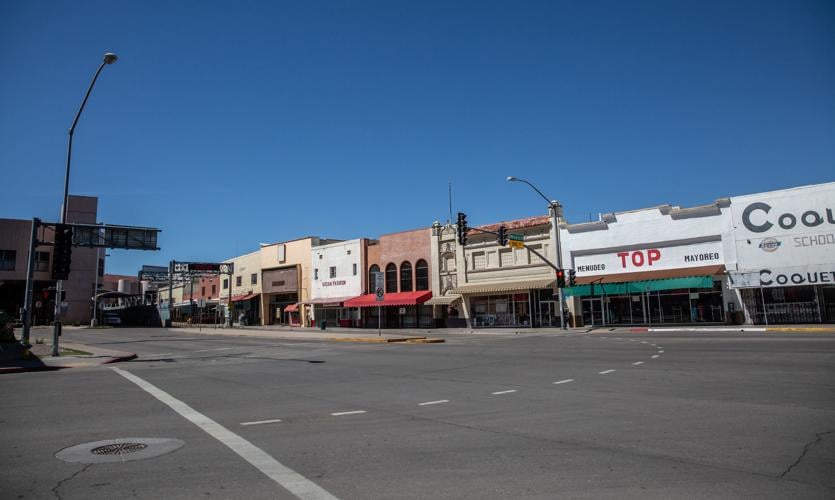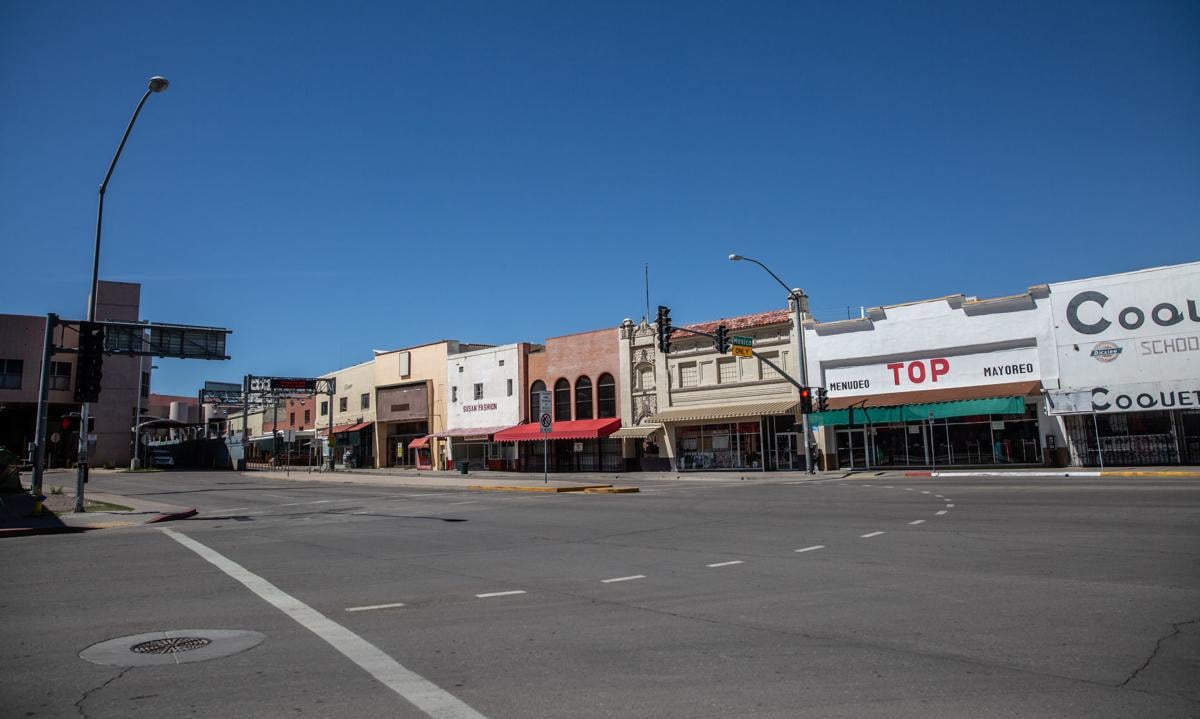There’s the crisis everyone thinks is happening on the border, and then there’s the crisis that people living in U.S. border towns are experiencing.
It’s the latter one they really want fixed, but the former one is getting most of the attention.
And they’re related in complicated ways.
The so-called crisis everyone knows about is the alleged “surge,” “wave,” “flood,” or “tsunami” — pick your aquatic-disaster metaphor — of people arriving at the Arizona-Mexico border. No matter how many times Attorney General Mark Brnovich claims it on Fox Business Network, that’s not such a big deal in Arizona. It’s more of a south Texas thing.
That hasn’t stopped Gov. Doug Ducey from exploiting the perception of a migration crisis to the hilt. He and Gov. Greg Abbott of Texas penned a hair-raising letter June 10 begging governors of other states to send their police officers as emergency assistance.
“On behalf of Texas and Arizona, we respectfully but urgently request that you send all available law-enforcement resources to the border in defense of our sovereignty and territorial integrity.”
Sheriffs Chris Nanos of Pima County and David Hathaway of Santa Cruz County told me there’s no need for out-of-state officers patrolling borders in their counties.
But they actually could be useful — if we had them help out at the ports of entry.
The ports are the source of the real border crisis suffered by borderland residents. Since March 2020, 16 long months, the ports of entry have been closed to nonessential travel. In other words, Mexican nationals with visas who want to go shopping or visit family can’t simply cross the border as usual.
The same is not true in the opposite direction. U.S. citizens can travel freely into Mexico and return home.
The result of blocking Mexican visitors has been economic devastation in downtown Nogales. Morley Avenue, for decades a lively shopping street, is deserted.
David Moore Jr., owner of David’s Western Wear at 346 N. Morley Ave., said business has been down about 80%. That’s because much of their business came from Mexican visitors taking a simple trip across the line for shopping. Now that customer base is gone.
“We have people from Tucson or Phoenix who go to see their relatives in Mexico,” he said. “They’ll stop and buy stuff occasionally, to take into Mexico.”
The effects reach to Tucson, where malls and stores already suffering from the turn to online shopping during the pandemic also lost some of their most dedicated shoppers, the ones who came regularly from Mexico.
This is the problem that border-town residents and, more recently, their political representatives are begging to fix.
U.S. Reps. Raúl Grijalva and Ann Kirkpatrick, who represent the entire Arizona-Mexico border, have written letters in recent weeks asking the federal government to lift the closure.
Grijalva told me Friday he would like the emergency declaration that justifies banning nonessential visitors to be lifted to accommodate a more regional approach.
“Lift the emergency order and let the local authorities look at the issue,” he said. “Let the regions do it.”
Gov. Ducey, amid his claims of an out-of-control border that needs reinforcements, has also acknowledged the need to keep boosting cross-border commerce. He visited Jaime Chamberlain’s new cooling warehouse in Nogales on June 16 and heard of the need for a reopened border.
Sen. Mark Kelly visited Nogales Friday July 2 and heard about it. Sen. Kyrsten Sinema’s office helped arrange a meeting of the Arizona District Export Council on Thursday, and that’s where some of the complications became clearer.
Several attendees explained to me that the Title 42 public health emergency declaration actually complicates reopening the border, even though it isn’t the specific legal justification for closing the ports of entry to nonessential travel.
Since March 2020, Title 42 has been used to justify immediate removal of most of the people who cross the border between ports of entry. In the current fiscal year, which began Oct. 1, 72% of the encounters Border Patrol has had with migrants crossing the Mexican border have resulted in expulsions under Title 42.
It’s a tool the Biden administration has continued to use, despite the strong objections of his supporters in the immigration community. In the four months after President Joe Biden took office, the Border Patrol expelled 400,503 out of 612,541 people it encountered along the Mexican border, 65% of the total.
To the extent perceptions of a migration crisis are hurting Biden, it could look worse if agents weren’t expelling people under Title 42.
The political logic of Title 42 expulsions also keeps the ports closed. In other words, if pandemic conditions allow the ports of entry to be reopened for nonessential travel, then Title 42 expulsions probably aren’t justified by the pandemic either.
But there are also practical concerns, as Chamberlain explained to me Friday.
“If we open the border to nonessential travel, there are going to be some challenges,” he said. “I think there will be a tremendous rush to come across the line, to go to Tucson and to Phoenix. A lot of people are chomping at the bit to travel and do business.”
That means port staff will be in high demand. Lifting Title 42 at the same time could also create an increased flow of people without visas — asylum seekers as well as economic migrants, stressing both the ports and the Border Patrol, he said.
Chamberlain wants to see a phased reopening, with the ports reopening to visitors first, then other border policies loosening later.
Guadalupe Ramirez, the CBP director of field operations overseeing Arizona’s ports of entry, told the exporters meeting that he could make reopening work, although many newer staff need to go through training delayed by the pandemic to be able to play all the roles required at the port. It will take work, but it can be done.
Frankly, it’s overdue: If American nationals can cross into Mexico despite the pandemic, then Mexican nationals with visas can cross into the U.S. Beyond that, the pandemic precautions we require are up to us, and can be customized as the situation changes.
That would start to solve the real crisis afflicting Arizona’s border-town residents.







